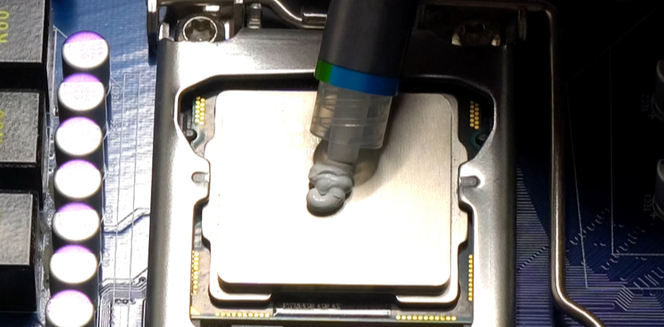Opting for the Right Potting Material is Important Indeed!

13 Oct
2020
Potting can be defined as the very method of topping up electronic components with solid compounds to safeguard them from the surrounding environs. In the last few years, use of potting constituents has become quite common in a number of industry verticals as they promise to protect electronic devices from moisture. Moreover, these composites have amazing shock resistance capability and are often preferred as flame retardants.
Potting procedure can be carried out either manually or by taking recourse to automatic MMD (metermix dispense) equipment. The most commonly used potting materials are polyurethane, epoxy, silicone, and others. Excellent chemical and electrical properties in silicone polymers have made them ideal for an array of applications in several sectors such as marine, automotive, aerospace, locomotive, automobile, electrical & electronics, and many more.
When it comes to designing and conniving an application where potting is absolutely necessary, the first question that tends to hit the individuals is what kind of material should be opted for- urethane, epoxy, or silicone. Nevertheless, the real challenge of plumping for the right potting component is reliant on the explicit application, the stipulations of the device, and its intended operation settings. The fact that silicone potting compounds present an exclusive fusion of elasticity, suppleness, and temperature resistance feature while retaining persistent mechanical properties over a wide range of diversified temperature has made them a suitable alternative over their counterparts. Especially, for potting delicate electronics, silicone can be an ultimate choice.
Due to their bounciness and pliability, silicones are known as a perfect material for potting subtle & elusive surface mount devices, since it happens to alleviate any defilements due to thermal reduction and extension. With the much required resistance to moisture, silicones are considered as an ideal choice for applications like shipping, outdoor lighting, embellishing aerospace, and many more.
Silicone gel and solid silicone rubber, the main two forms of silicone potting compounds, come with the potential to reduce unwanted mechanical stress and offer shock absorption protection. Also, it has constant, unwavering physicochemical properties and it provides excellent resistance to high as well as low temperature. This way, it can easily work in the range of fifty to two hundred degree of Celsius for a long stretch of time. Coming with high-end insulating properties, they commendably perk up the cording between internal modules and strokes after potting, thus enhancing the stability of the electronic components altogether. With the capability to mend and overhaul, the sealed constituents can be swiftly removed for replacement with utmost ease.
According to Allied Market Research, the global silicone potting compounds market is anticipated to register a considerable growth from 2020 to 2027. Rapid development of consumer electronics sector has contributed to the growth of the market in more than one way. Potting compounds tend to provide a highly effective way to dissolve the heat from a heat-generating radix to a metal insertion. The other advantages associated with the products comprise outstanding electrical wadding, lower contraction, thermal shock detention, and thermal growth.
Moreover, the fast curing time of silicone potting compounds along with their remarkable bond strength have made them a highly preferred choice in an array of industry verticals. On the other hand, availability of economical substitutes including polyurethanes and epoxy resin is expected deter the market growth to some extent. However, huge demand for electric vehicles all over the world has already seemed to mellow down the restraining factor and paved the way for multiple opportunities for the frontrunners in the industry. Features like moisture resistance and shock absorption have escalated the use of silicon potting compounds in manufacturing of EVs.

Koyel Ghosh
Author’s Bio- Koyel Ghosh is a blogger with a strong passion and enjoys writing in miscellaneous domains, as she believes it lets her explore a wide variety of niches. She has an innate interest in creativity and enjoys experimenting with different writing styles. A writer who never stops imagining, she has been serving the corporate industry for the last five years.
Avenue: Entire Library membership of Allied Market Research Reports at your disposal
- Avenue is an innovative subscription-based online report database.
- Avail an online access to the entire library of syndicated reports on more than 2,000 niche industries and company profiles on more than 12,000 firms across 11 domains.
- A cost-effective model tailored for entrepreneurs, investors, and students & researchers at universities.
- Request customizations, suggest new reports, and avail analyst support as per your requirements.
- Get an access to the library of reports at any time from any device and anywhere.
Related Post
-
How are Submarine Cables Transforming Global Connectivity with Enhanced User Experience?
-
Endoscopy Procedures: Transformations in Techniques and Applications
-
AI-Powered Video Analytics: How the Product Actually Works for enterprises
-
Painting Robots: Transforming Precision Coating and Creative Applications
-
Innovations in Pharmacovigilance Systems Advancing Patient Safety
-
Understanding Edge Security: Keeping Data Safe Near the Source
-
Exploring the Use and Advancements of 3D Laser Scanners in Professional Applications
-
Reinforcing Industrial Controls with Smarter Tools and Training








